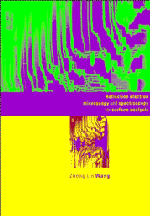Book contents
- Frontmatter
- Contents
- Preface
- Symbols and definitions
- 0 Introduction
- 1 Kinematical electron diffraction
- Part A Diffraction of reflected electrons
- 2 Reflection high-energy electron diffraction
- 3 Dynamical theories of RHEED
- 4 Resonance reflections in RHEED
- Part B Imaging of reflected electrons
- Part C Inelastic scattering and spectrometry of reflected electrons
- Appendix A Physical constants, electron wavelengths and wave numbers
- Appendix B The crystal inner potential and electron scattering factor
- Appendix C.1 Crystallographic structure systems
- Appendix C.2 A FORTRAN program for calculating crystallographic data
- Appendix D Electron diffraction patterns of several types of crystal structures
- Appendix E.1 A FORTRAN program for single-loss spectra of a thin crystal slab in TEM
- Appendix E.2 A FORTRAN program for single-loss REELS spectra in RHEED
- Appendix E.3 A FORTRAN program for single-loss spectra of parallel-to-surface incident beams
- Appendix E.4 A FORTRAN program for single-loss spectra of interface excitation in TEM
- Appendix F A bibliography of REM, SREM and REELS
- References
- Materials index
- Subject index
2 - Reflection high-energy electron diffraction
Published online by Cambridge University Press: 18 January 2010
- Frontmatter
- Contents
- Preface
- Symbols and definitions
- 0 Introduction
- 1 Kinematical electron diffraction
- Part A Diffraction of reflected electrons
- 2 Reflection high-energy electron diffraction
- 3 Dynamical theories of RHEED
- 4 Resonance reflections in RHEED
- Part B Imaging of reflected electrons
- Part C Inelastic scattering and spectrometry of reflected electrons
- Appendix A Physical constants, electron wavelengths and wave numbers
- Appendix B The crystal inner potential and electron scattering factor
- Appendix C.1 Crystallographic structure systems
- Appendix C.2 A FORTRAN program for calculating crystallographic data
- Appendix D Electron diffraction patterns of several types of crystal structures
- Appendix E.1 A FORTRAN program for single-loss spectra of a thin crystal slab in TEM
- Appendix E.2 A FORTRAN program for single-loss REELS spectra in RHEED
- Appendix E.3 A FORTRAN program for single-loss spectra of parallel-to-surface incident beams
- Appendix E.4 A FORTRAN program for single-loss spectra of interface excitation in TEM
- Appendix F A bibliography of REM, SREM and REELS
- References
- Materials index
- Subject index
Summary
Reflection high-energy electron diffraction (RHEED) is a powerful technique for in situ observation of thin film growth in molecular beam epitaxy (MBE). The technique is particularly useful for providing in situ real-time structure evolution during thin film growth, and it is becoming an indispensable technique for characterizing phase transformation in synthesizing new materials of technological importance. In this chapter, we will apply the kinematical diffraction theory introduced in Chapter 1 to describe the fundamental characteristics of RHEED and its applications in determining surface structures. RHEED oscillation and its applications for monitoring film growth are systematically described. This remarkable phenomenon allows layer-by-layer monitoring of thin film growth.
The geometry of RHEED
RHEED was first used for oxide film studies by Miyake (1937), and it has been widely applied to monitor thin film growth during MBE deposition (Ino, 1987). A review of the RHEED geometry and the associated reciprocal space analyses has been given by Mahan et al. (1990) and Dobson (1987). A summary of surface structure determination using RHEED has been given by Ino (1987). Recent studies by Locquet and Machler (1994) have shown the sensitivity of the entire RHEED pattern to the layer-by-layer growth of DyBa2Cu3O7−x high-Tc superconductor thin films.
Figure 2.1 shows the scattering geometry of RHEED, in which the incident electron beam strikes the sample surface at a grazing angle of 1–3°. The electron energy can be as low as a few kilo-electron-volts and as high as 1000 keV (in TEM only).
- Type
- Chapter
- Information
- Publisher: Cambridge University PressPrint publication year: 1996

